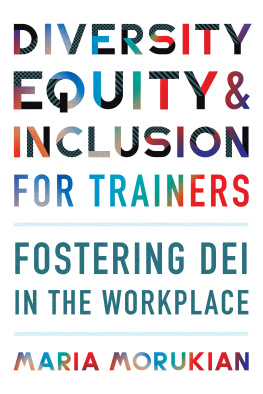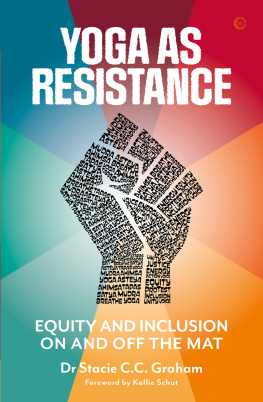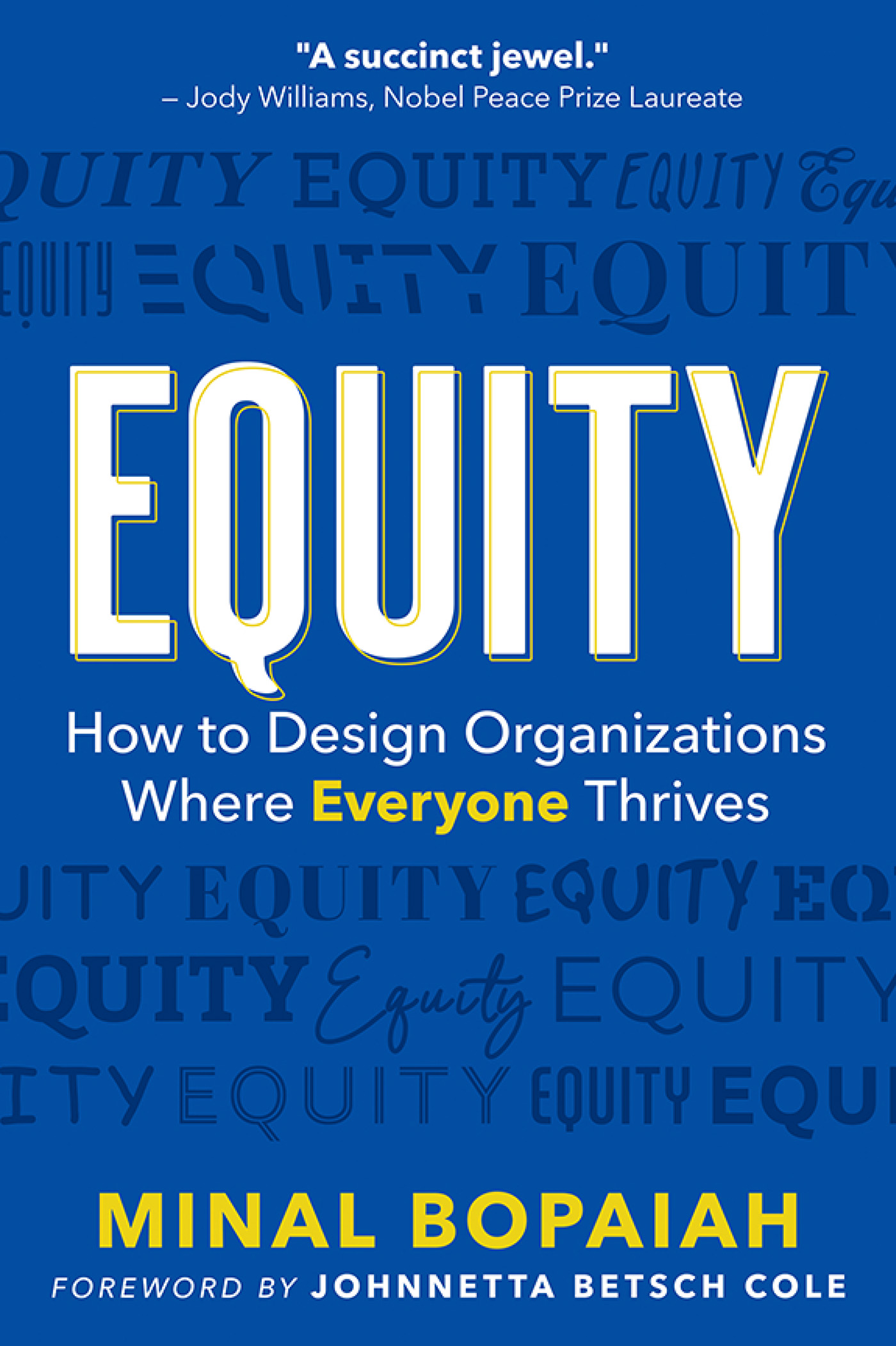Contents
Guide
Page List
EQUITY

Equity
Copyright 2021 by Minal Bopaiah
All rights reserved. No part of this publication may be reproduced, distributed, or transmitted in any form or by any means, including photocopying, recording, or other electronic or mechanical methods, without the prior written permission of the publisher, except in the case of brief quotations embodied in critical reviews and certain other noncommercial uses permitted by copyright law. For permission requests, write to the publisher, addressed Attention: Permissions Coordinator, at the address below.

| Berrett-Koehler Publishers, Inc.
1333 Broadway, Suite 1000
Oakland, CA 94612-1921
Tel: (510) 817-2277, Fax: (510) 817-2278
www.bkconnection.com |
Ordering information for print editions
Quantity sales. Special discounts are available on quantity purchases by corporations, associations, and others. For details, contact the Special Sales Department at the Berrett-Koehler address above.
Individual sales. Berrett-Koehler publications are available through most bookstores. They can also be ordered directly from Berrett-Koehler: Tel: (800) 929-2929; Fax: (802) 864-7626; www.bkconnection.com
Orders for college textbook/course adoption use. Please contact Berrett-Koehler: Tel: (800) 929-2929; Fax: (802) 864-7626.
Distributed to the U.S. trade and internationally by Penguin Random House Publisher Services.
Berrett-Koehler and the BK logo are registered trademarks of Berrett-Koehler Publishers, Inc.
First Edition
Paperback print edition ISBN 978-1-5230-9025-9
PDF e-book ISBN 978-1-5230-9026-6
IDPF e-book ISBN 978-1-5230-9027-3
Digital audio ISBN 978-1-5230-9028-0
2021-1
Book producer: PeopleSpeak
Text designer: Marin Bookworks
Cover designer: Sophie Greenbaum
For my brother.
My flaws are mine, and mine alone;
but all my goodness is because of you.
Contents
Illustrations
Figures
Photos
Foreword
Violent acts of systemic racism, sexism, heterosexism, and other forms of inequity are certainly not new in our country or in the world. And yet the recent killings of George Floyd, Breonna Taylor, Tony McDade, Nina Pop, and so many other Black people have led to far more awareness of inequities and a growing interest in addressing these injustices. It is almost prescient that Minal Bopaiah has written a book that addresses systemic inequity, and it should be read widely by individuals in diverse organizations who share an interest in, and hopefully have a commitment to, transforming their workplaces so that everyone can thrive.
This book is about very serious and complex attitudes and behaviors. Minal addresses how implicit bias influences how we design our systems, organizations, and even our culture; how we can use human-centered design to invite behavior change; and how to draw on principles of behavior change communications to effectively communicate inclusion, diversity, equity, and accessibility and thereby reduce resistance and sabotage in organizations. And she dares to compel leaders to make it their business to uphold democracy in service of creating a more equitable world. And yet this book is an easy read because Minal is a gifted writer and an engaging storyteller who draws on just the right amount of authoritative research, engaging examples, and personal experiences.
Minal clearly appreciates the power of brevity and of wit. This book, though slim in the number of its pages, is full of critical ideas, practical and doable steps for designing and creating meaningful change, and inspiring passages that have the possibility to incentivize anyone who reads them to create more equity and justice. And should we do so in ways small or grand, as this book promises, we will know the depths of our true humanity.
This is an ambitious promise, but I expect no less from Minal, who claims me as her mentor, a role I willingly and proudly play. As an African proverb says, She who teaches must learn and she who learns must teach. A healthy, meaningful, and satisfying relationship always involves reciprocity. And so, over the years that Minal and I have known and worked with each other, we continue to learn from and teach each other about the similarities and differences in being cisgender Brown and Black women of very different ages, trained in different academic disciplines, but equally committed to social justice as we carry out our respective work to help organizations create more inclusive, diverse, equitable, and accessible workplaces.
In the interest of full disclosure, I must share that in addition to our mentor-mentee relationship, Minal and I have grown to refer to each other in familial termsI am her Auntie J, and she is my Niecey. These forms of address reflect the reality that kinship is about more than lines of descent and marital relationships. Kinship is also about shared values, beliefs, and yes, shared hopes and dreams. Therefore, I cannot claim detachment in recommending her book. Rather, I claim lineage, for it is clear, despite our differences in both life and how we approach our work, we see the world through the same lens. And that world can be made beautiful through the virtue and practice of equity.
Johnnetta Betsch Cole, PhD
President and Board Chair, National Council of Negro Women President Emerita, Spelman and Bennett Colleges
INTRODUCTION
The Virtue of Equity
On a bright August day in 1976, my Indian parents arrived in New York City with one suitcase, twenty dollars, and my mother pregnant with me. Without Google, they found their way from the airport to Greenpoint, Brooklyn, where they had secured medical residency positions at a local hospital. They began working at a time when New York Citys financial mismanagement, high drug use, and racist War on Crime had created an atmosphere of civil war. My father saw more gunshot wounds in one night in the emergency room than in four years of surgical residency in England. For months, my very pregnant mother slept in a sleeping bag on the floor of their apartment. During the New York City blackout of 1977, my father and his colleagues triaged patients in the hospital parking lot illuminated only by the headlights of local fire engines. On an average day, security guards escorted them to and from the hospital buildings because so many medical residents had been mugged by people living with addiction who had been pushed to the fringes of society instead of invited into the hospital for treatment.
Eventually, my parents made it out of Brooklyn, moving to the greener suburbs of Staten Island, and started their own private practicemy mother in pediatrics and my father in colon and rectal surgery. (Their waiting room was always a prickly and entertaining cocktail of people young and old, most of whom didnt want to be there.) They bought a home and an office building, sent two kids to private school and college debt-free, provided for multiple family members, and contributed to their communities. New York







